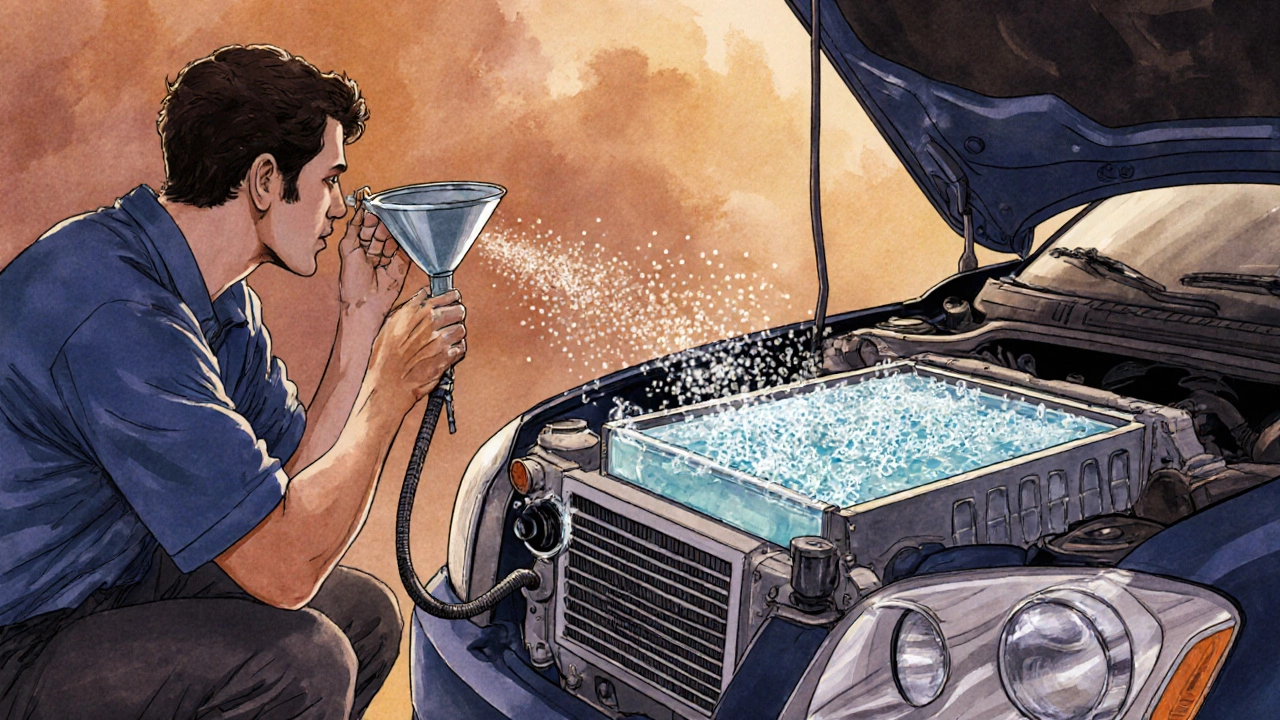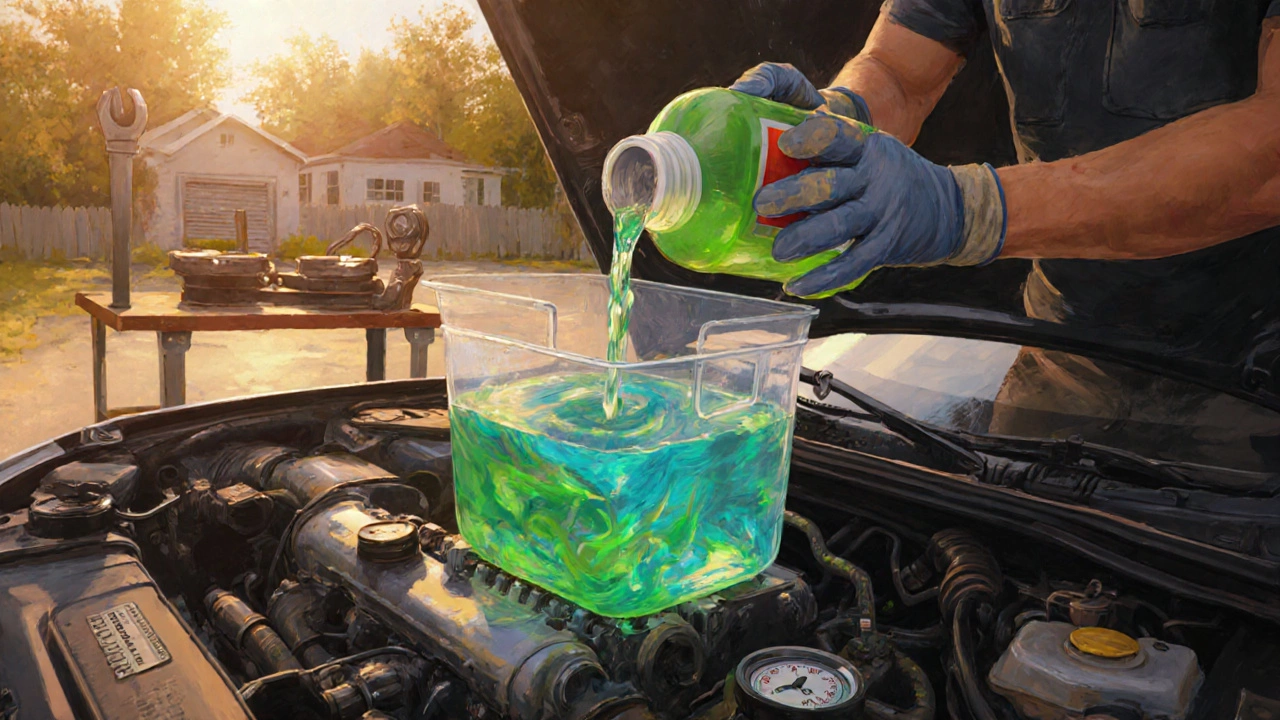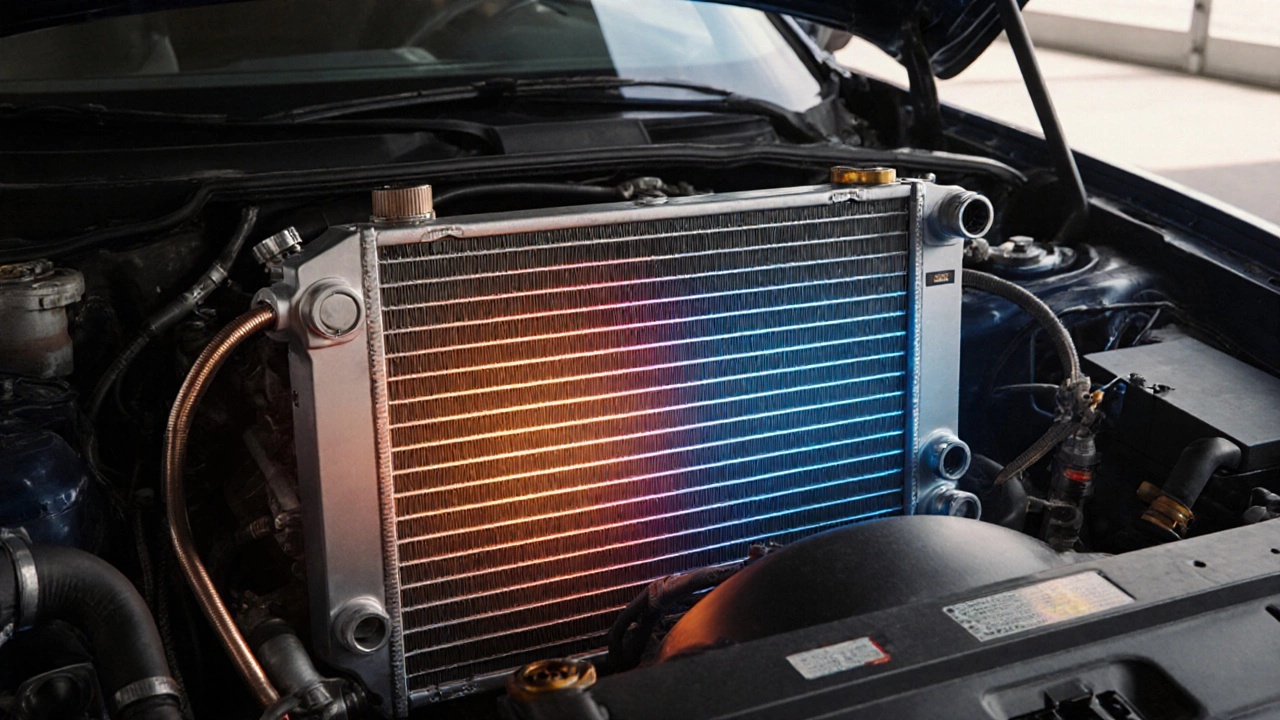Radiator Noise Diagnostic Tool
Hissing
Sharp, continuous high-pitched sound
Gurgling
Bubbling or sucking sound, especially when idling
Clanking/Knocking
Metal-on-metal thuds that sync with engine RPM
Whistling
High-pitched whistle that rises with engine speed
Squealing
Faint, steady squeak, often louder when fan kicks on
Boiling/Rattling
Rapid bubbling similar to a pot of water boiling
When your engine starts to overheat, the radiator is the component that dissipates heat from the coolant by transferring it to the air. A failing radiator often announces itself with distinct noises that can save you from a costly repair. Below you’ll learn which noises point to a bad radiator, why they happen, and what steps you can take before the problem escalates.
Why a Radiator Makes Noise
A radiator isn’t a silent piece of metal. It contains coolant a mix of water and antifreeze that circulates through the engine and a series of tubes, fins, and a pressure cap. When any part of that system fails-whether it’s a leak, a blocked passage, or a faulty thermostat-the fluid dynamics change, creating audible signs.
Common Sounds and Their Meanings
Below is a quick cheat‑sheet of the most frequent noises you might hear and what they usually mean.
| Noise | Description | Likely Cause | Urgency |
|---|---|---|---|
| Hissing | Sharp, continuous high‑pitched sound | Pressure loss from a cracked hose or leak in the radiator | High - stop driving soon |
| Gurgling | Bubbling or sucking sound, especially when idling | Air trapped in the cooling system or low coolant level | Medium - check coolant ASAP |
| Clanking / Knocking | Metal‑on‑metal thuds that sync with engine RPM | Loose mounting brackets, warped radiator core, or water‑pump bearing wear | High - inspect immediately |
| Whistling | High‑pitched whistle that rises with engine speed | Radiator cap not sealing properly or a small puncture | Medium - replace cap or repair |
| Squealing | Faint, steady squeak, often louder when the fan kicks on | Fan bearing failure or loose fan belt affecting coolant flow | Low to Medium - fix before overheating |
| Boiling / Rattling | Rapid bubbling similar to a pot of water boiling | Severe overheating due to blockage or failed thermostat | Critical - stop engine |

How to Diagnose the Noise Yourself
- Park the car on a level surface, let the engine cool for at least 15 minutes, then open the hood.
- Visually inspect the radiator for cracks, corrosion, or coolant stains. Look for wet spots on the ground or around the radiator core.
- Check the radiator cap which maintains system pressure. Press it lightly; a loose or damaged cap often produces a whistling sound when the engine runs.
- Start the engine and listen from the front of the car. Use a piece of cardboard or a funnel to narrow your ear toward the radiator area for clearer sound identification.
- If you hear hissing, spray a little water on the suspected leak area. A fresh leak will often sputter more intensely.
- Turn the heater on high. A gurgling noise that disappears when the heater is engaged usually signals trapped air that the heater core is helping to flush out.
- Inspect the water pump which circulates coolant through the radiator for wobble or leaks. A failing pump can cause clanking noises that echo near the radiator.
When to Fix It Yourself vs. Calling a Mechanic
Not every noise requires a trip to the garage. Here’s a quick rule‑of‑thumb:
- Replace the radiator cap if you hear a consistent whistle or notice the coolant level dropping after a short drive. Caps are inexpensive and easy to swap.
- Flush the system when you detect gurgling that goes away after the heater is on for a few minutes. A DIY coolant flush can be done with a drain plug and a garden hose.
- Patch small leaks using a radiator sealant if the crack is minor and the car isn’t overheating. This buys you time but isn’t a permanent fix.
- Replace the radiator outright if you hear a loud hissing that won’t stop, or if coolant pours out quickly. This is a high‑urgency scenario.
- Consult a professional for clanking or knocking sounds, as they often indicate structural damage that needs proper alignment or a new radiator core.

Step‑by‑Step DIY Fix for a Common Leak
- Gather a radiator sealant kit (available at most auto parts stores) and safety gloves.
- Allow the engine to cool completely; hot coolant can burn.
- Locate the leak-often a small puncture near the top or a cracked hose.
- Drain the coolant into a container, following local disposal guidelines.
- Mix the sealant according to the product instructions and pour it into the radiator opening.
- Re‑fill with the proper coolant‑to‑water ratio (typically 50/50 for most temperate climates).
- Run the engine for 10 minutes, checking for any new drips and listening for the hissing to stop.
Remember, this fix is temporary. Schedule a proper radiator replacement within the next few weeks.
Preventive Maintenance Tips
Keeping the coolant clean and at the correct level is the best defense against noisy radiators.
- Check the coolant level monthly, especially before long trips.
- Inspect hoses for cracks or bulges every six months.
- Replace the radiator cap every two years, even if it looks fine.
- Flush the cooling system every 30,000km or as per the manufacturer’s recommendation.
- Pay attention to the temperature gauge on the dashboard. A sudden rise often precedes a noise.
Frequently Asked Questions
What does a hissing sound from the radiator mean?
A hissing sound usually indicates a loss of pressure, often caused by a crack in the radiator, a leaky hose, or a faulty radiator cap. The coolant is escaping as steam, and the engine can overheat quickly.
Can I ignore a gurgling noise?
Gurgling usually means air pockets are trapped in the cooling system. While it’s not an immediate emergency, ignoring it can lead to overheating later. A quick coolant bleed or a simple system flush usually resolves it.
Is a whistling radiator cap dangerous?
Yes, a whistling cap can’t maintain the required pressure, causing the coolant to boil at a lower temperature. Replace the cap promptly to avoid engine heat damage.
How do I know if the radiator needs a full replacement?
If the hissing persists after replacing the cap, if coolant loss is rapid, or if you hear loud clanking that doesn’t subside, the radiator core is likely compromised. In those cases a full replacement is the safest option.
Why does my radiator make a squealing noise when the fan turns on?
Squealing often points to a worn fan bearing or a loose drive belt. The fan struggles to push air through the radiator, reducing cooling efficiency and potentially leading to overheating.
Understanding the language of a bad radiator can save you time, money, and a lot of stress. The next time you hear that odd hissing or gurgling, you’ll know exactly what to check, how urgent it is, and whether you can fix it yourself or need a professional. Keep an ear out, stay on top of coolant maintenance, and your engine will stay cool for miles to come.




